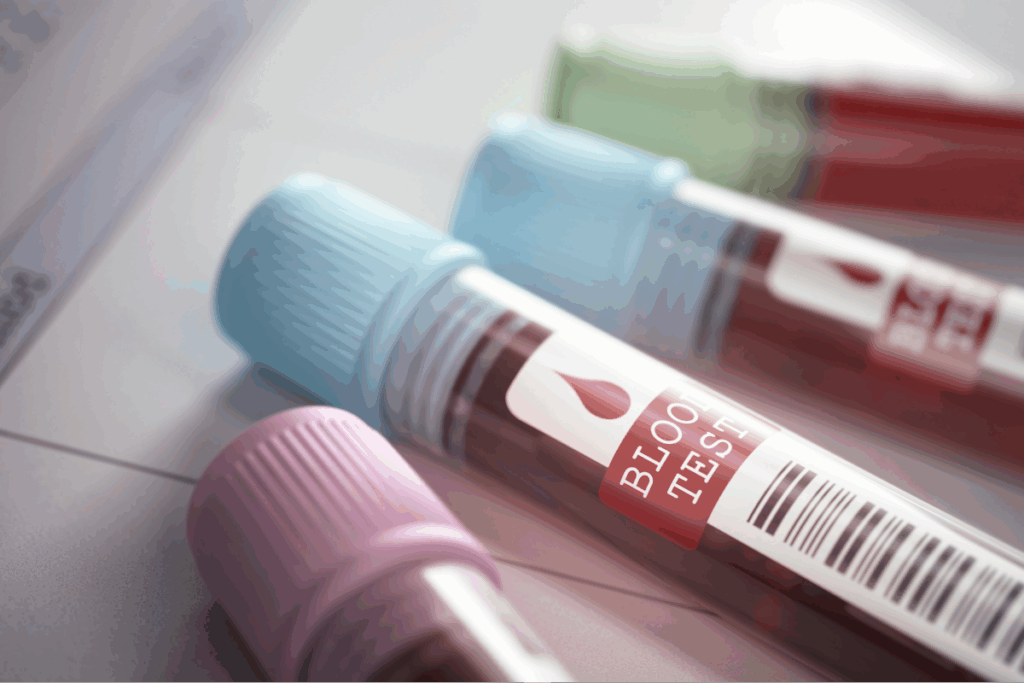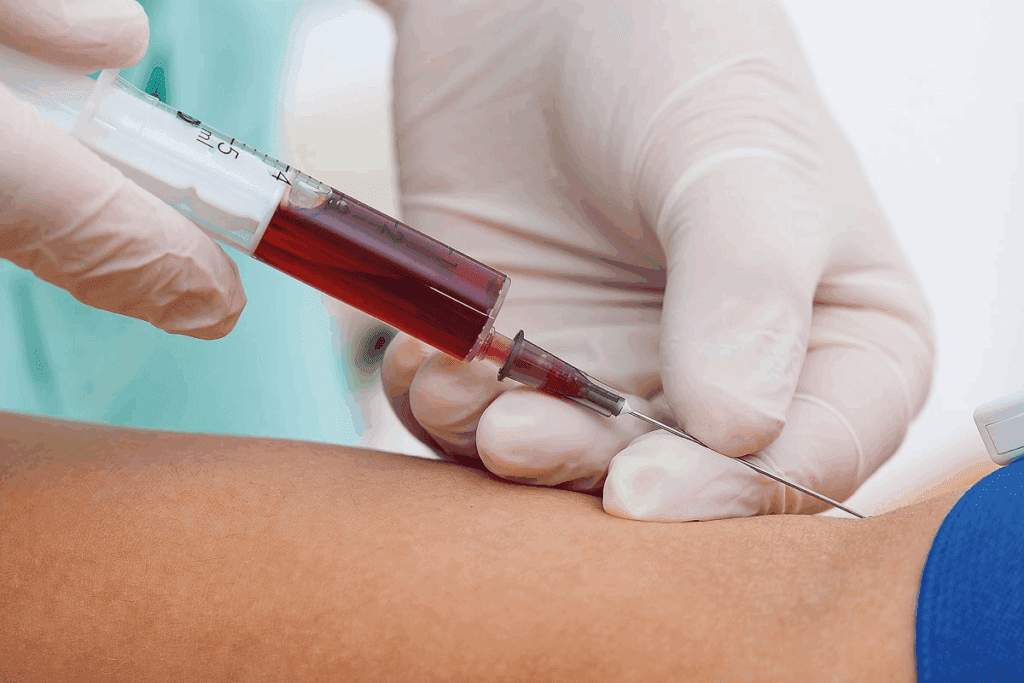Last Updated on November 25, 2025 by Ugurkan Demir

Learn how to calculate artery blood pulsatility index step by step for accurate vascular assessment.
Knowing about vascular health is key for staying well. The pulsatility index of arterial blood flow is a big part of it. At Liv Hospital, we focus on precise tests to help our patients.
The pulsatility index (PI) shows how much blood flow is blocked in arteries. To find the PI, you just need to know the peak systolic velocity, end-diastolic velocity, and mean velocity.
Getting the pulsatility index right is key for spotting and treating blood vessel problems. Our team at Liv Hospital works hard to give top-notch care. We use the newest tests to make sure our patients get the best health results.

The pulsatility index is a key tool for doctors to check blood flow in arteries. It shows how well blood moves through arteries. This helps doctors understand a patient’s vascular health.
The pulsatility index is a measure from Doppler ultrasound. It shows how much blood flow is blocked in arteries. This index is key for checking how blood flows in arteries.
To find the pulsatility index, you use the formula: PI = (PSV – EDV) / MV. PSV is the highest blood flow, EDV is the lowest, and MV is the average.
The pulsatility index is very important in checking blood flow. It helps find and track problems like blocked arteries. A high index means there might be a blockage in the arteries.
Doctors use it to see how bad vascular diseases are. It’s a safe way to check if treatments are working. This tool gives quick info on a patient’s blood flow.
“The pulsatility index is a key tool for diagnosing and managing vascular diseases. It helps understand the complex flow of blood in arteries.”

Understanding artery blood flow is key to making sense of pulsatility index values. The pulsatility index shows how much resistance there is to blood flow in arteries. To get this, we need to know the basics of blood flow.
Several things affect artery blood flow. These include the size of the blood vessel, blood pressure, and how much blood the heart pumps. The size of the blood vessel is very important. Narrower vessels make it harder for blood to flow.
Blood pressure, made by the heart’s pumping, is also very important. And how much blood the heart pumps out each minute affects blood flow too.
Another factor is vascular resistance. This is influenced by blood’s thickness and the blood vessel’s size. The pulsatility index shows this resistance. A higher index means more resistance to blood flow.
Normal blood flow in arteries is smooth and layered. This is important for delivering oxygen to tissues. If blood flow isn’t smooth, it could mean there’s a problem with the arteries.
Healthcare professionals need to understand these principles to diagnose and treat vascular diseases. By knowing what affects blood flow and how to read the pulsatility index, doctors can give better care to patients.
For doctors, knowing what equipment is needed to calculate the Pulsatility Index is key. Accurate PI measurements are vital for checking and monitoring blood vessel health.
Doppler ultrasound is a non-invasive method that gives important info on blood flow. It’s a must-have for measuring the Pulsatility Index. This tech sends out high-frequency sound waves that bounce off moving blood cells. This allows for the calculation of blood flow speeds.
We use Doppler ultrasound because it’s both effective and safe. It gives us real-time data without the need for invasive methods. The data from Doppler ultrasound is essential for figuring out peak systolic and end-diastolic velocities. These are key parts in calculating the PI.
| Equipment | Description | Use in PI Measurement |
| Doppler Ultrasound | Non-invasive technique using sound waves to measure blood flow | Essential for measuring peak systolic and end-diastolic velocities |
| Advanced Imaging Techniques | Utilizes sophisticated imaging to provide detailed vascular information | Enhances the accuracy of PI calculations by providing detailed flow data |
Along with Doppler ultrasound, advanced imaging techniques are also important for measuring the Pulsatility Index. These methods give detailed views of blood vessel health. They help in making more accurate diagnoses and treatment plans.
Techniques like MRI and CT angiography give a full view of the blood vessels. They help in checking blood flow and how well blood vessels work. While Doppler ultrasound is often the first choice for PI measurement, these advanced methods can provide more info when needed.
To get reliable results, it’s key to prepare well for pulsatility index measurement. We’ll show you how to get ready for this test. This will help make sure your results are accurate and trustworthy.
Getting the patient’s position right is very important for this test. It’s best to have them sit or lie down in a way that keeps them calm and steady. This helps avoid any movement or stress that could mess up the blood flow and the test’s accuracy.
| Positioning Considerations | Impact on Measurement |
| Comfortable patient positioning | Reduces movement artifacts |
| Avoiding tight clothing | Ensures unobstructed blood flow |
Choosing the right artery is key for getting good pulsatility index measurements. The choice should match the patient’s health situation and needs.
By preparing the patient well and picking the right artery, doctors can get accurate and reliable pulsatility index measurements.
Calculating the Pulsatility Index (PI) is key to checking vascular health. Knowing how to calculate the PI is vital for healthcare workers. We’ll show you how to do it right.
To start, we measure the Peak Systolic Velocity (PSV). PSV is the blood flow’s highest speed during systole. It’s a big part of the PI. We use Doppler ultrasound to find PSV.
Then, we figure out the End-Diastolic Velocity (EDV). EDV is the blood flow’s speed at diastole’s end. Getting EDV right is key for the PI. Again, Doppler ultrasound helps us here.
The Pulsatility Index formula uses PSV and EDV. By following these steps, doctors can find the PI accurately. This is very helpful in diagnosing and treating vascular issues.
To find the pulsatility index, we start by measuring the peak systolic velocity (PSV) with Doppler ultrasound. PSV is key to understanding blood flow in arteries.
Doppler ultrasound helps us see and measure blood flow velocity. We place the Doppler probe on the artery we’re studying. This lets us get the systolic waveform and find the peak systolic velocity.
Getting PSV right is very important. It affects the pulsatility index calculation. If PSV is wrong, the PI might be off too, which could lead to bad decisions.
To measure PSV, we follow a few steps:
By accurately measuring PSV, we set up for a correct pulsatility index. This is key for checking vascular health and making good clinical choices.
Measuring end-diastolic velocity is key for vascular checks. It’s taken right before the heart starts to contract again. Getting this measurement right is vital for a correct pulsatility index.
Finding the minimum velocity point is important. It happens at the end of the heart’s relaxation phase. To measure end-diastolic velocity well, the Doppler signal must be clear. The measurement should be taken at the right time in the heart’s cycle.
Key steps include:
By following these steps, doctors can get precise end-diastolic velocity readings. This is essential for calculating the pulsatility index and checking vascular health.
Calculating mean velocity means finding the average blood flow speed over a heartbeat. It’s key to check how well blood vessels are working. First, we need to know how to figure out mean velocity.
To find mean velocity, we average the blood flow speeds over a heartbeat. We measure the speed at different times in the cycle. Then, we find the average. The formula for mean velocity is the average of the speeds recorded over one or more heartbeats.
Here’s how to calculate mean velocity:
“The accurate measurement of mean velocity is key for a reliable Pulsatility Index.”
In short, getting mean velocity right is essential for calculating the Pulsatility Index. By knowing how to average blood flow speeds, doctors can make sure PI measurements are accurate.
We’ve found the peak systolic velocity (PSV), end-diastolic velocity (EDV), and mean velocity (MV). Now, we can use these to find the pulsatility index (PI). The PI is key in checking how well blood flows in arteries.
The formula for the pulsatility index is simple: PI = (PSV – EDV) / MV. It shows how the peak systolic velocity, end-diastolic velocity, and mean velocity relate.
For example, if PSV = 80 cm/s, EDV = 20 cm/s, and MV = 40 cm/s, we get PI = (80 – 20) / 40 = 60 / 40 = 1.5.
Here are a few more examples to help us understand the pulsatility index better:
These examples show how to use the pulsatility index formula with different velocities. Healthcare experts can use this to check vascular health and spot blood flow problems.
Understanding PI values is key for doctors to care for their patients well. The pulsatility index comes from Doppler ultrasound. It shows how blood flows in arteries.
How you see PI values changes based on the patient and the artery being checked. A high PI means blood flow is harder to push through. A low PI means it’s easier.
| PI Value Range | Interpretation | Clinical Significance |
| 0.5 – 1.0 | Low resistance | Normal or high-flow states |
| 1.0 – 2.0 | Moderate resistance | Normal or mildly abnormal |
| > 2.0 | High resistance | Potential vascular disease or stenosis |
Knowing these values helps doctors spot and treat vascular problems. For example, a high PI might show stenosis or high resistance. This could mean the patient needs more tests or treatment.
By correctly reading PI values, doctors can understand their patients’ vascular health. This helps them choose the right treatments. It also improves how well patients do.
Recent studies have greatly expanded our knowledge of the pulsatility index (PI). It’s a key metric for checking vascular health. PI helps us understand arterial stiffness and neurovascular health.
Arterial stiffness is a big risk factor for heart disease. Research shows PI is linked to how stiff arteries are. This makes PI a great tool for checking heart health.
The link between PI and artery stiffness is complex. It depends on age, high blood pressure, and diabetes. Knowing this helps us spot and treat heart diseases early.
PI is also important for checking brain blood vessels. Studies show it can show how well brain blood vessels work. It’s used to check brain health in conditions like stroke and vasospasm.
Thanks to new medical imaging and Doppler ultrasound, we now know more about PI in brain health. These tools let doctors check brain blood flow and resistance without surgery. This gives us important info on brain health.
Knowing how to calculate the pulsatility index is key for checking vascular health. We showed you how to measure PI, from getting the patient ready to understanding the results. The pulsatility index helps us see how blood flows in arteries.
New Doppler ultrasound tech makes PI measurements more accurate. This helps doctors diagnose and track vascular diseases better. We talked about how PI is used in different medical situations, showing its big role in today’s vascular care.
Learning about PI helps doctors make better choices for their patients. This leads to better health results. We stress the need for ongoing learning and practice to keep up with new methods and knowledge.
The pulsatility index is key for checking artery health. It uses Doppler ultrasound to give insights into arteries. It helps in diagnosing and tracking vascular diseases.
To find the pulsatility index, you measure peak systolic velocity (PSV), end-diastolic velocity (EDV), and mean velocity (MV). The formula is (PSV – EDV) / MV.
Doppler ultrasound is a non-invasive way to measure blood flow. It’s used to find PSV, EDV, and MV for the pulsatility index.
Proper preparation is key for accurate readings. This includes the right positioning, choosing the right artery, and making sure the patient is relaxed.
The pulsatility index is used in many ways. It helps check artery stiffness, neurovascular health, and track vascular conditions.
Understanding PI results needs context. A higher PI often means more resistance in the arteries.
Peak systolic velocity is important for PI. It shows the blood flow’s highest speed during systole.
End-diastolic velocity is also key for PI. It shows the blood flow’s lowest speed during diastole.
Mean velocity is essential for PI. It shows the average blood flow speed over a heartbeat.
Subscribe to our e-newsletter to stay informed about the latest innovations in the world of health and exclusive offers!